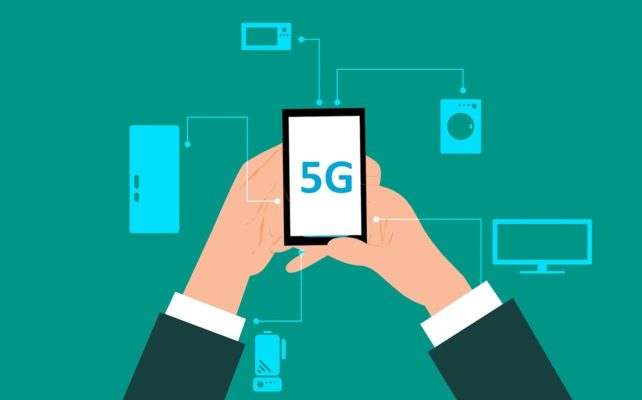
5G edge computing is a buzzword getting a lot of traction. So, what is edge computing topology? Is 5G IOT technology here to stay? In this post, we consider the implementation and benefits of 5g edge computing.
Simple Definition of Edge Computing Topology
Edge computing is a methodology to deliver application capabilities closer to the end-user or IoT (Internet of Things) device to increase processing speed and reduce latency, improving the end-user experience. Edge computing combined with 5G networking provides a way to produce rapid response experiences.
5G edge computing is a paradigm that brings computing resources from the cloud and data centers closer to the users via 5G broadband communications. Locally processing data closer to the source of end-users and devices results in the reduction of both response times experienced by users and the bandwidth required by centralized cloud-deployed solutions.
How does Edge Computing work?
To understand how 5G edge computing works, it is important to understand a centralized, cloud-based architecture. In a centralized model, data is sent wholesale to a cloud-based application for processing, requiring a great deal of bandwidth and resulting in considerable latency. Edge computing moves as much data processing as possible to the devices at the outer edge of networks.
Edge computing topology compliments traditional centralized, cloud-based networks. The growth and advancement of 5G IoT technology devices and rich user experiences make it possible to build high-volume solutions that collect, store and process data. These innovations allow you to improve your network utilization by placing more processing capabilities at the network edge closer to where you gather data, allowing data to be processed more quickly and in real-time.
What is an Edge Device?
5G edge computing is primarily focused on the IoT (Internet of Things) devices that reside at the outer edge of a network. A small sampling of 5G IoT technology devices include:
- Smartphones and tablets
- Notebook computers
- Smartwatches
- Smart security devices (cameras, CO detectors, door locks, etc.)
- Driverless automobiles (cars, trucks and farm equipment)
- Automobile-installed computers (Wi-fi, crash detection, etc.)
- Smart appliances (factory equipment, refrigerators, microwaves, etc.)
The sheer number of Internet-connected devices doubles every five years. In a large metropolitan area covering 300 square miles, there is a potential of roughly 1 billion devices needing network access connectivity in the future.
While today’s 4G networks can support roughly 4,000 devices per square mile, networks providing 5G connectivity will dramatically increase the number to approximately 3 million devices per square mile.
Edge vs. Cloud vs. Fog Computing
Most people associate edge computing with cloud and fog computing. However, you shouldn’t use these terms interchangeably. Let’s look at their differences:
Edge computing
Edge computing entails deploying computing and storage resources where the data is produced. An example is rugged edge computers that enable autonomous vehicles to gather data collected by the vehicle’s camera, process it, analyze it, and make split-second decisions.
Cloud computing
Cloud computing uses off-site systems hosted on the internet to help computers store, manage, process, and communicate information. Examples of cloud computing include SaaS (Software as a Service, IaaS (Infrastructure as a Service), and PaaS (Platform as a Service).
Fog computing

In fog computing, resources such as data, computers, and applications are located between the data source and the cloud – neither at the edge nor in the cloud. Fog computing also helps to reduce latency. A good example of fog computing is accessing CCTV footage from a fog node rather than requesting it from the cloud, which could take time.
What is the Importance of Edge Computing Topology?
The purpose of edge computing is to deliver a faster and more responsive experience to end users by working around certain network limitations. Here are network limitations that edge computing helps to address.
Bandwidth
Bandwidth is expressed in bits per second and refers to the maximum amount of data transmitted over a network in a given time. All networks have limited bandwidth. Although you can increase network bandwidth to accommodate more devices, it can be costly. A better alternative is leveraging edge computing to reduce the need for bandwidth between network components.
Latency
Latency, also known as lag, is the time it takes to move from one point on a network to another. There can be delays when transferring big data or when there is a large distance. These delays can be frustrating and costly. Latency can be improved by taking advantage of edge computing.
Congestion
Network congestion occurs when a network link carries more information than it can handle. This results in queueing, blocking of new connections, or packet loss. Because 5G edge computing reduces the information exchanged between network nodes, there’s reduced network congestion.
Edge Computing Use Cases
5Gg edge computing has a wide range of products, services, and applications. Here are a fraction of some of its use cases:
Healthcare
Medical monitoring equipment can store information such as heart rate, pressure, and temperature and provide reminders for medication. This real-time response can help save lives.
Security system monitoring
Edge computing enables real-time surveillance systems that focus on crime prevention. If fully adopted, this can tremendously reduce crime.
Smart cities
City governments are also taking advantage of edge computing. How? Combining 5G IoT technology and AI/ML (artificial intelligence/machine learning) to identify and rectify problems affecting citizen safety, citizen satisfaction, and waste management.
Video conferencing
Live videos require notable bandwidth. But since edge computing brings backend functions closer to the video, it can eliminate latency and lag.
Security Challenges of Edge Computing
Security can be a challenge when using edge computing and IoT devices. The biggest concern is probably dealing with the multiple sensors and devices from different manufacturers. It can be an uphill task to track each 5G IoT device.
Another concern is that many edge computing devices lack an interface. To manage security settings, you need to use outside devices and programs. This can be challenging, especially when deploying a large number of these devices.
To alleviate these security concerns, it’s important to segment key systems, components, and controls. By segmenting the different IoT devices, you can prevent a breach at one point of the network that could cause the entire edge computing platform to fail.
Wrap-up
Edge computing is still growing; many businesses are already using it for data-driven operations that require quick results. Even with some security challenges, edge computing can yield huge benefits to traditional data centers.